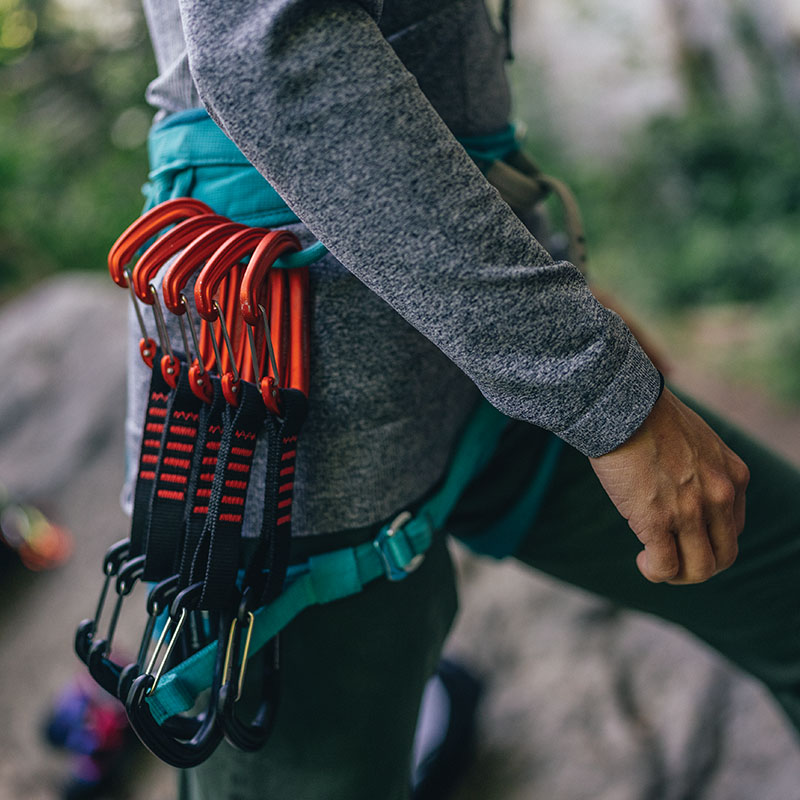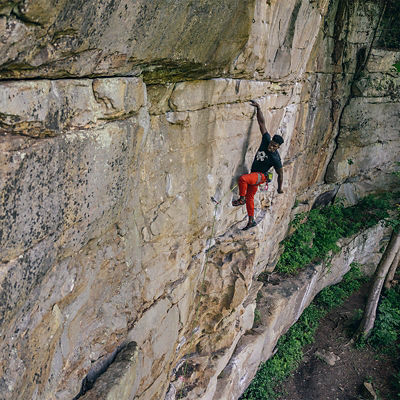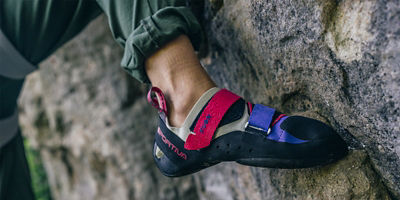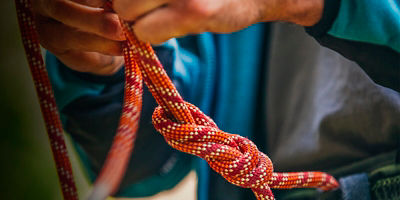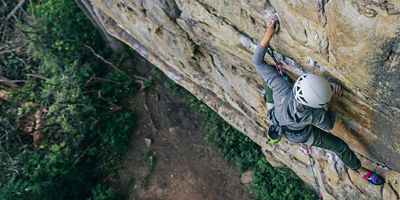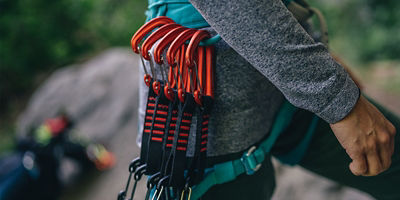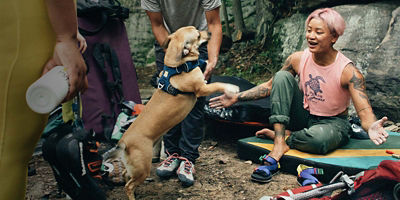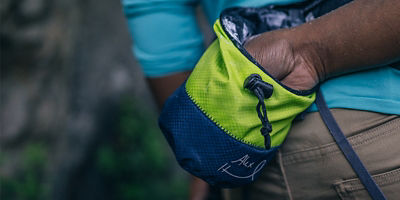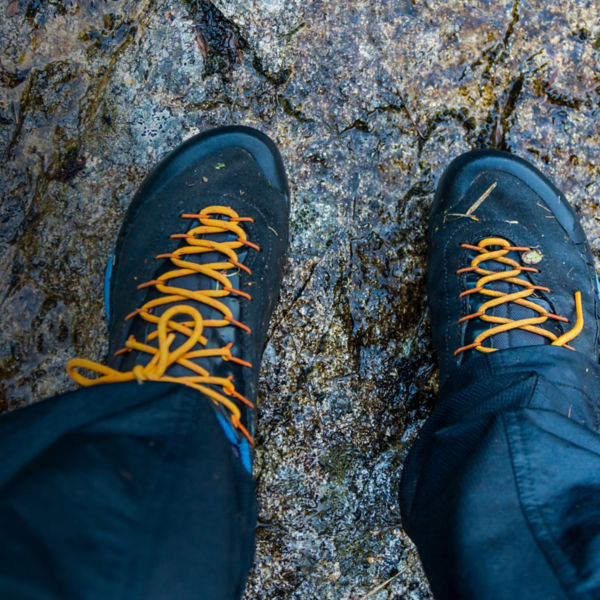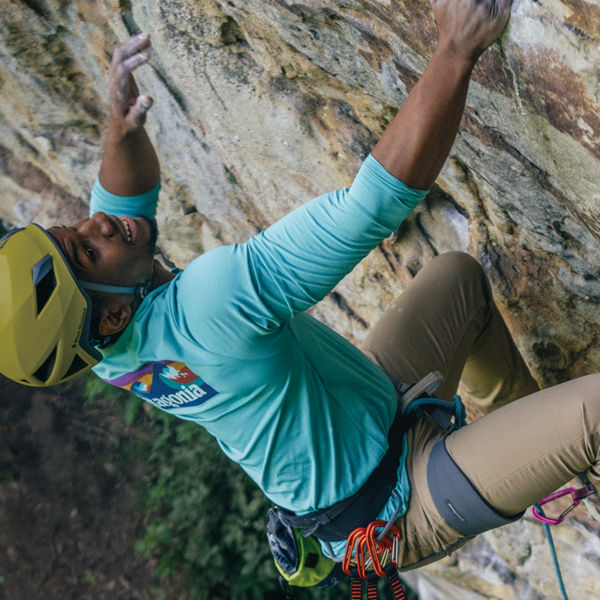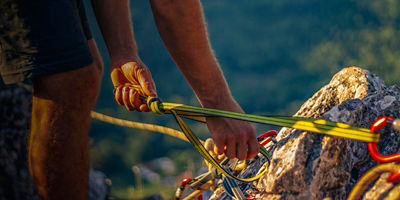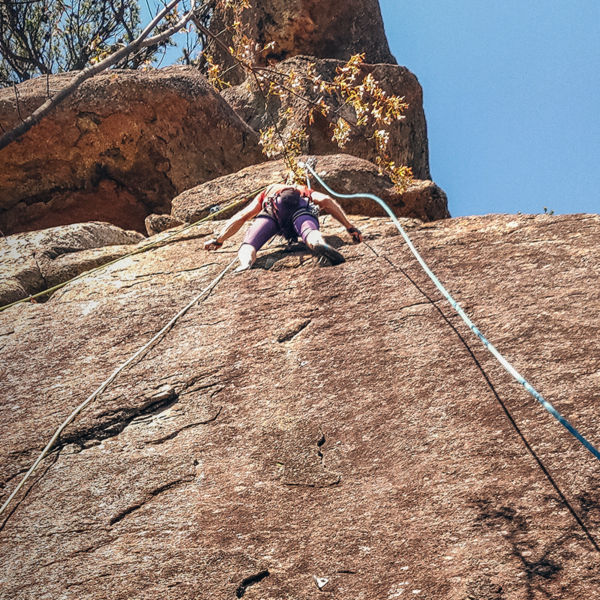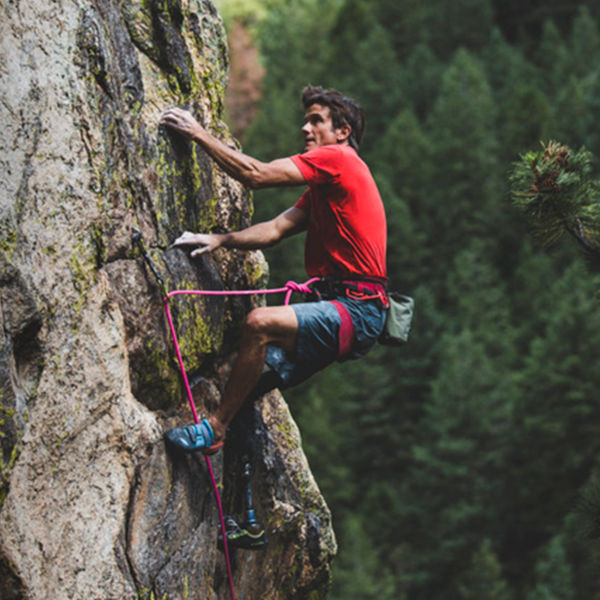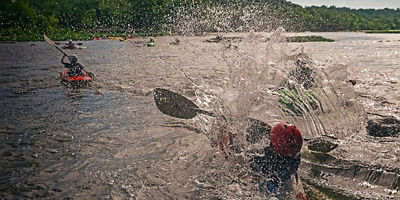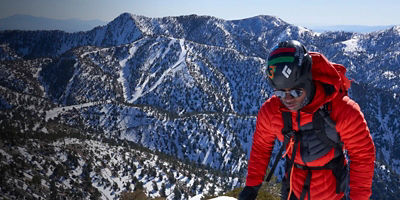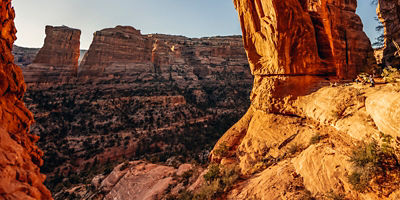
They catch you when you fall, give you a hand when the rock’s not cooperating, and keep your favorite rope out of harm’s way. Nope, not your climbing partner—your quickdraws.
Quickdraws and alpine draws are similar pieces of gear: Each one consists of a strip of material—usually a stiff nylon “dogbone” or a Dyneema sling—and two carabiners. As you ascend a route, you’ll clip one carabiner to each bolt or piece of trad protection that you pass, and the other carabiner to your rope.
Draws may be simple, but you’ll be handling them a lot—often while scared or exhausted and desperate to have your next piece clipped. And not all draws are made equal. Some designs prioritize weight over all else, while others are more ergonomic for quick clipping on hard routes. To help you choose the best quickdraws for your needs, we put together this guide. In it, you’ll learn the following:
- The best quickdraws for sport climbing
- The best draws for trad climbing
- How many draws do I need?
- Material considerations
The Best Quickdraws for Sport Climbing
Sport climbers usually prefer quickdraws—two carabiners joined by a rigid dogbone of fixed length—over alpine draws for ease of use when clipping. Here’s what to look for.
Weight
When you’re first shopping for quickdraws, it can be tempting to buy the lightest or cheapest set you see. But when you’re sport climbing, you won’t usually be carrying much gear on your harness aside from your quickdraws, so there’s less pressure to carry ultralight ones. Plus, many draw manufacturers shave weight by downsizing their carabiners—not the best choice if you’re trying to push rope through a carabiner quickly. On a sport route, you’re more likely to waste energy fumbling to clip than carrying a few extra ounces. Instead of trying to shave weight, consider prioritizing ease of use.
Dogbone Thickness
Skinny, 1-centimeter-wide Dyneema dogbones look fancy, but they’re not always practical for sport climbing. If you want to push your limits on a harder route, it can be nice to have a stiff, beefy dogbone—something closer to 2 or 2.5 centimeters—to stabilize the carabiner while you’re clipping. Thicker dogbones are also easier to grab if you get scared or stuck on a move.
Draw Length
The standard length for dogbones is 10 to 12 centimeters, which is adequate for most routes. However, many sport climbers carry a few quickdraws with 16- to 18-centimeter dogbones as well. These longer draws are useful for making hard-to-reach clips safer and/or preventing “rope drag,” or excess friction created by zig-zagging bolt lines.



